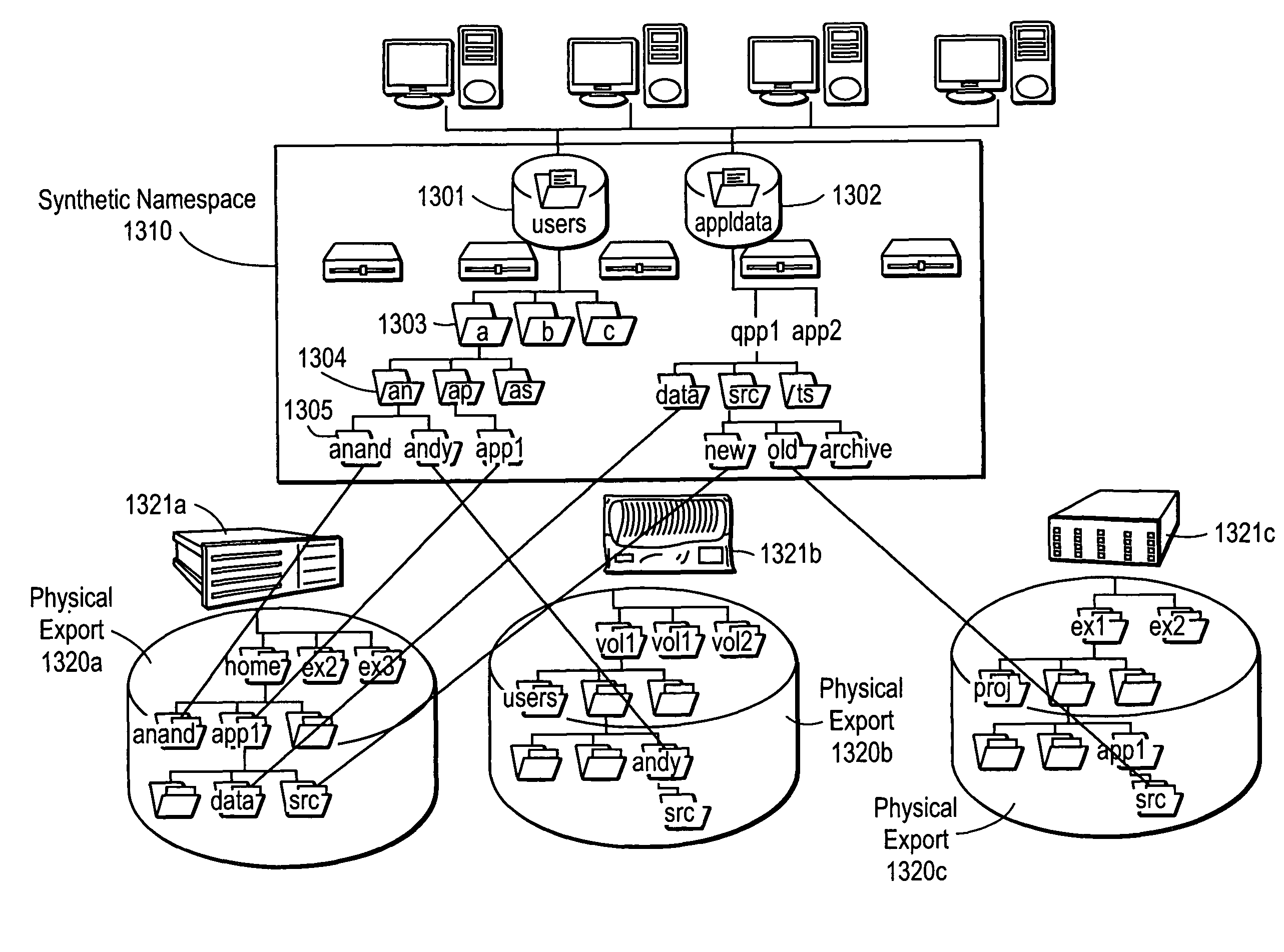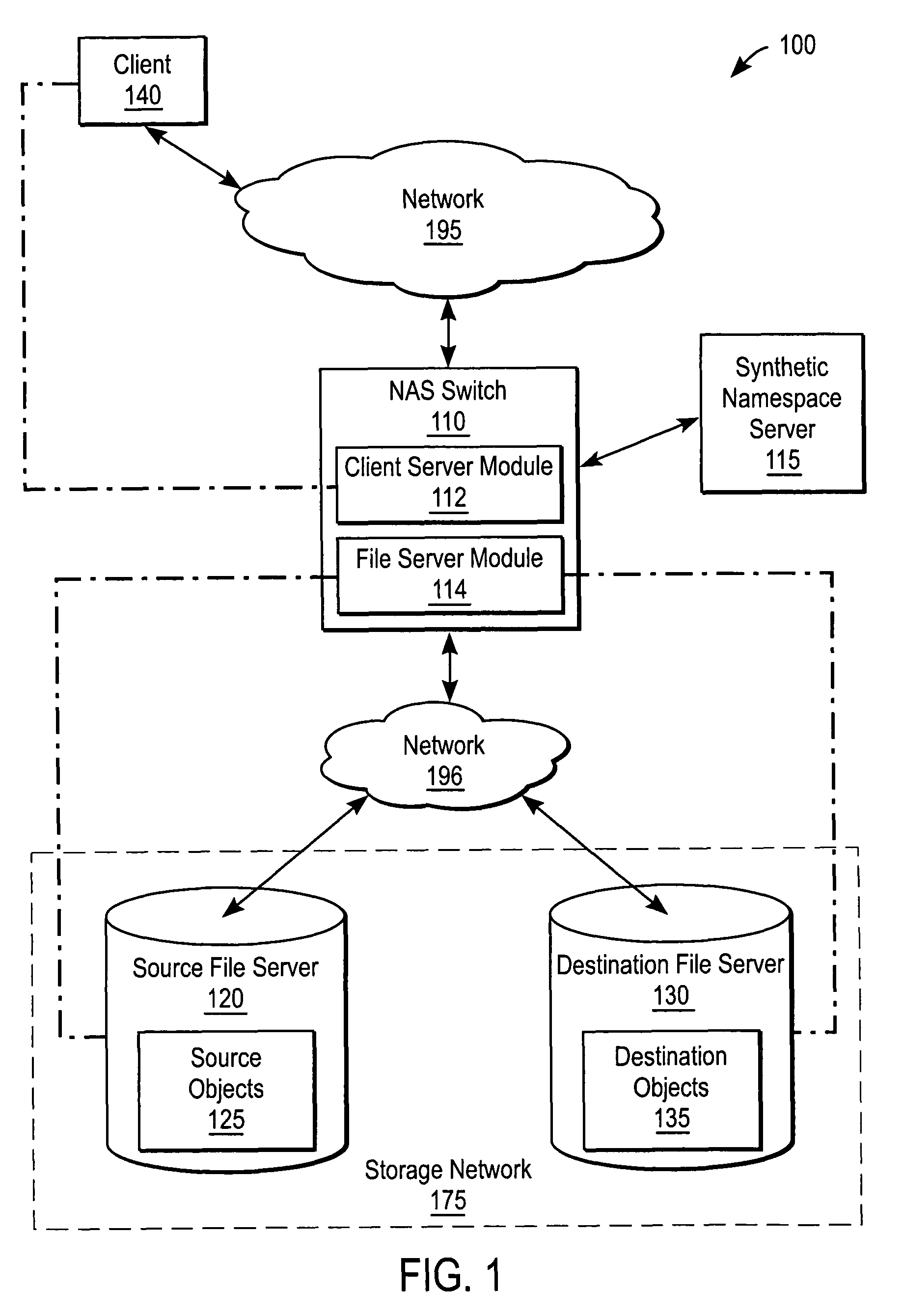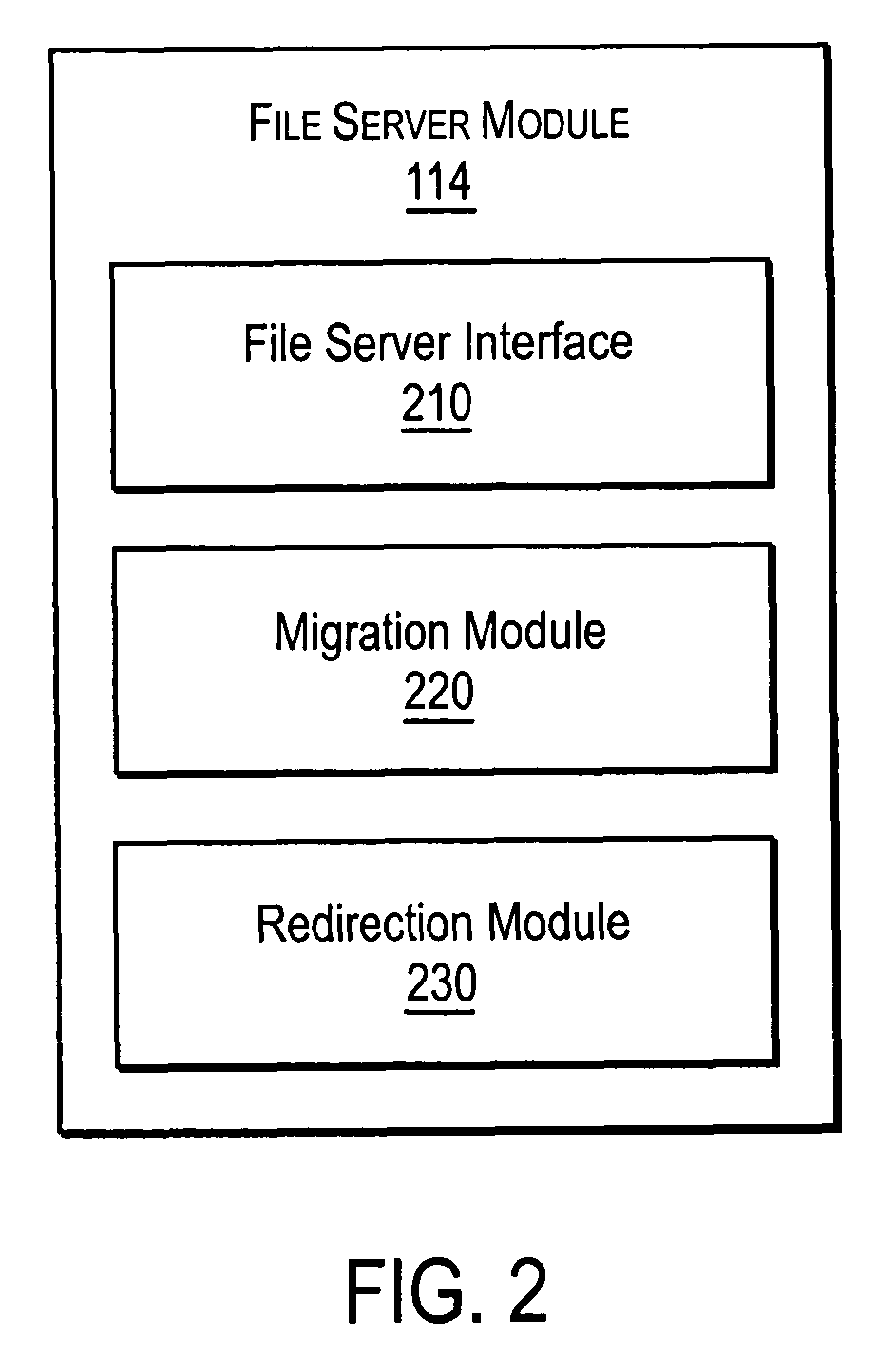Customizing a namespace in a decentralized storage environment
a namespace and storage environment technology, applied in the field of storage networks, can solve the problems of no centralized control, drawbacks of nas storage network and san storage network, and the use of more expensive and powerful storage area networks for file servers, so as to maintain data availability
- Summary
- Abstract
- Description
- Claims
- Application Information
AI Technical Summary
Benefits of technology
Problems solved by technology
Method used
Image
Examples
Embodiment Construction
[0028]Systems and methods for generating customized namespace are described. A namespace, as referred to herein, is specific to a physical share from which the namespace is exported. The namespaces of several physical shares can be combined and presented to clients as a unified namespace (also referred to as a “global namespace”). From the unified namespace, a synthetic namespace can be limited to a subset of designated objects that are independent of the physical share. For example, one synthetic namespace can be configured to include objects that are document files while another synthetic namespace can be configured to include objects that are graphical files. In another example, one synthetic namespace can be configured to include objects related to an engineering department while another synthetic namespace can be configured to include objects related to a marketing department. In other examples, synthetic namespaces can be segregated according to location, permissions (e.g., re...
PUM
 Login to View More
Login to View More Abstract
Description
Claims
Application Information
 Login to View More
Login to View More - R&D
- Intellectual Property
- Life Sciences
- Materials
- Tech Scout
- Unparalleled Data Quality
- Higher Quality Content
- 60% Fewer Hallucinations
Browse by: Latest US Patents, China's latest patents, Technical Efficacy Thesaurus, Application Domain, Technology Topic, Popular Technical Reports.
© 2025 PatSnap. All rights reserved.Legal|Privacy policy|Modern Slavery Act Transparency Statement|Sitemap|About US| Contact US: help@patsnap.com



